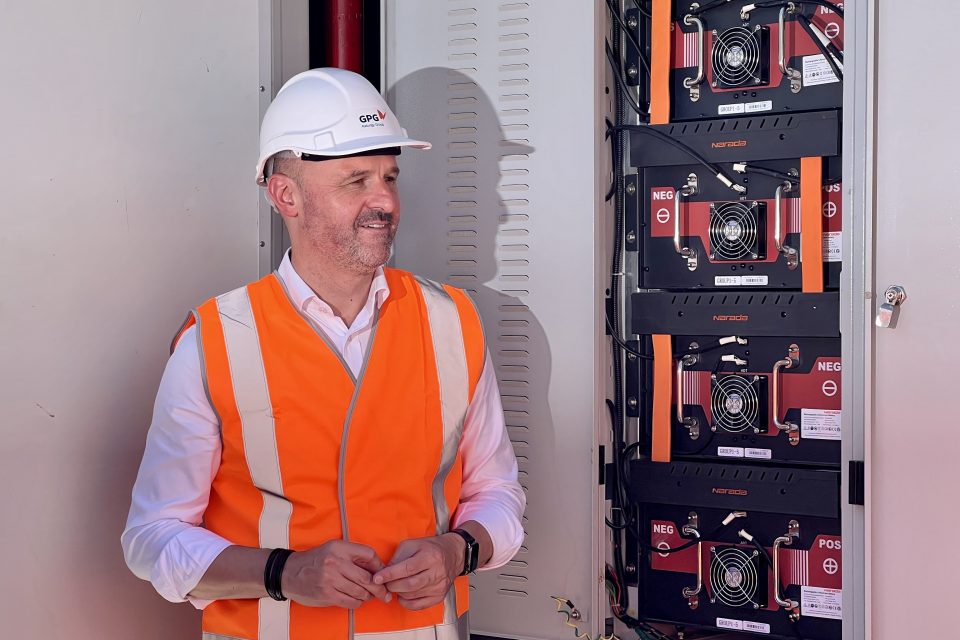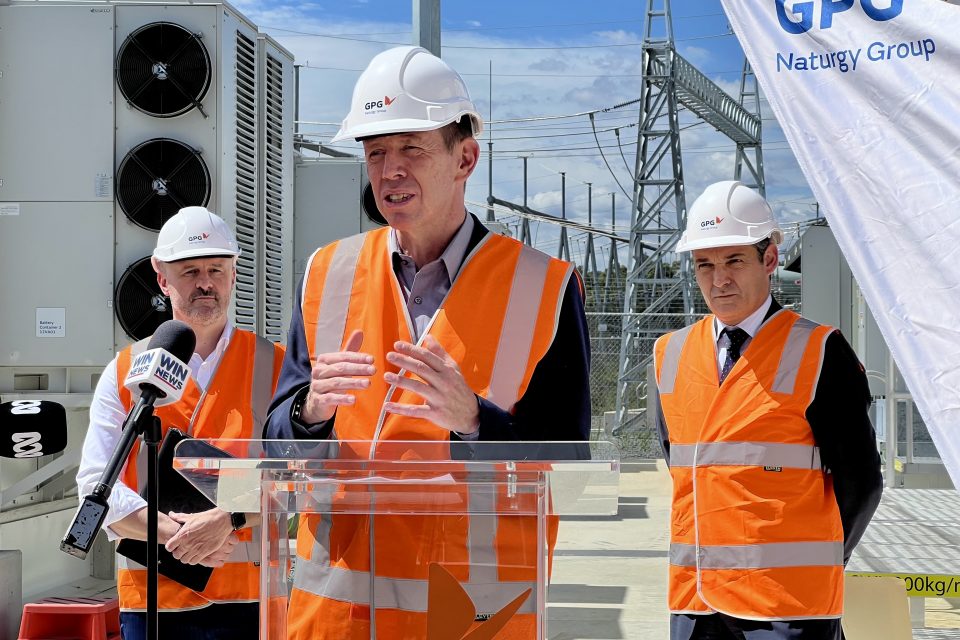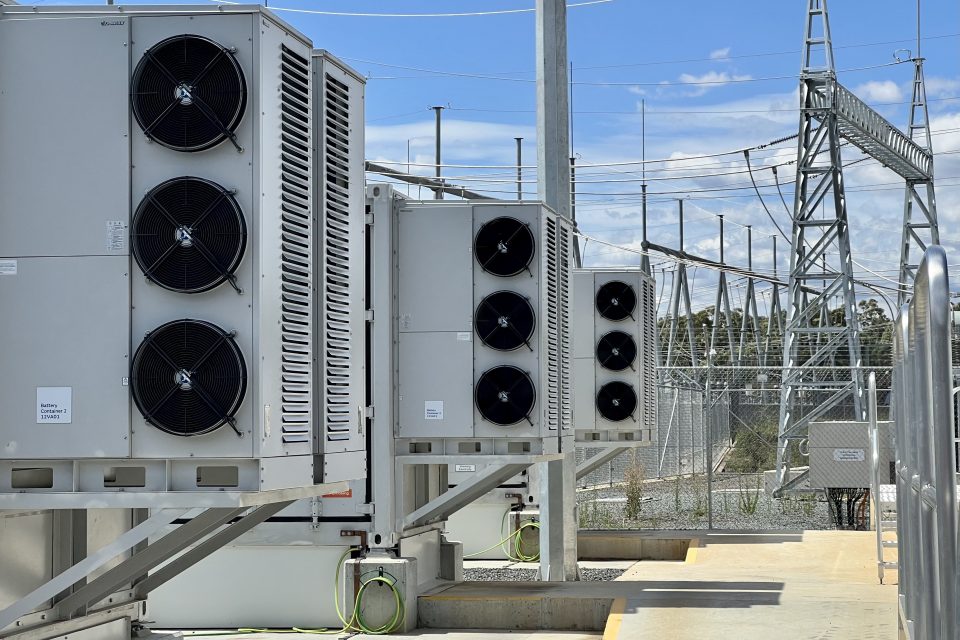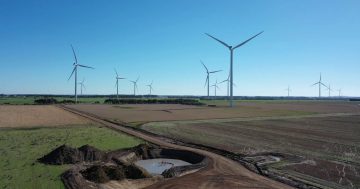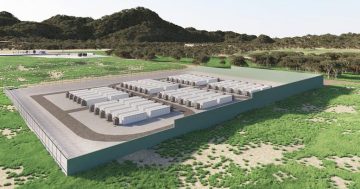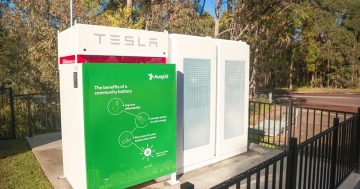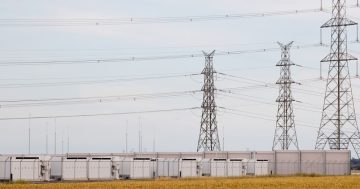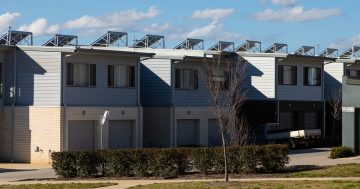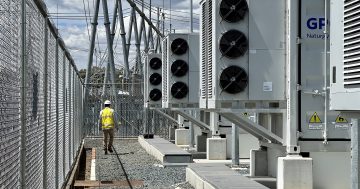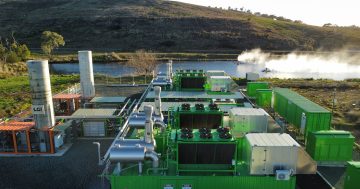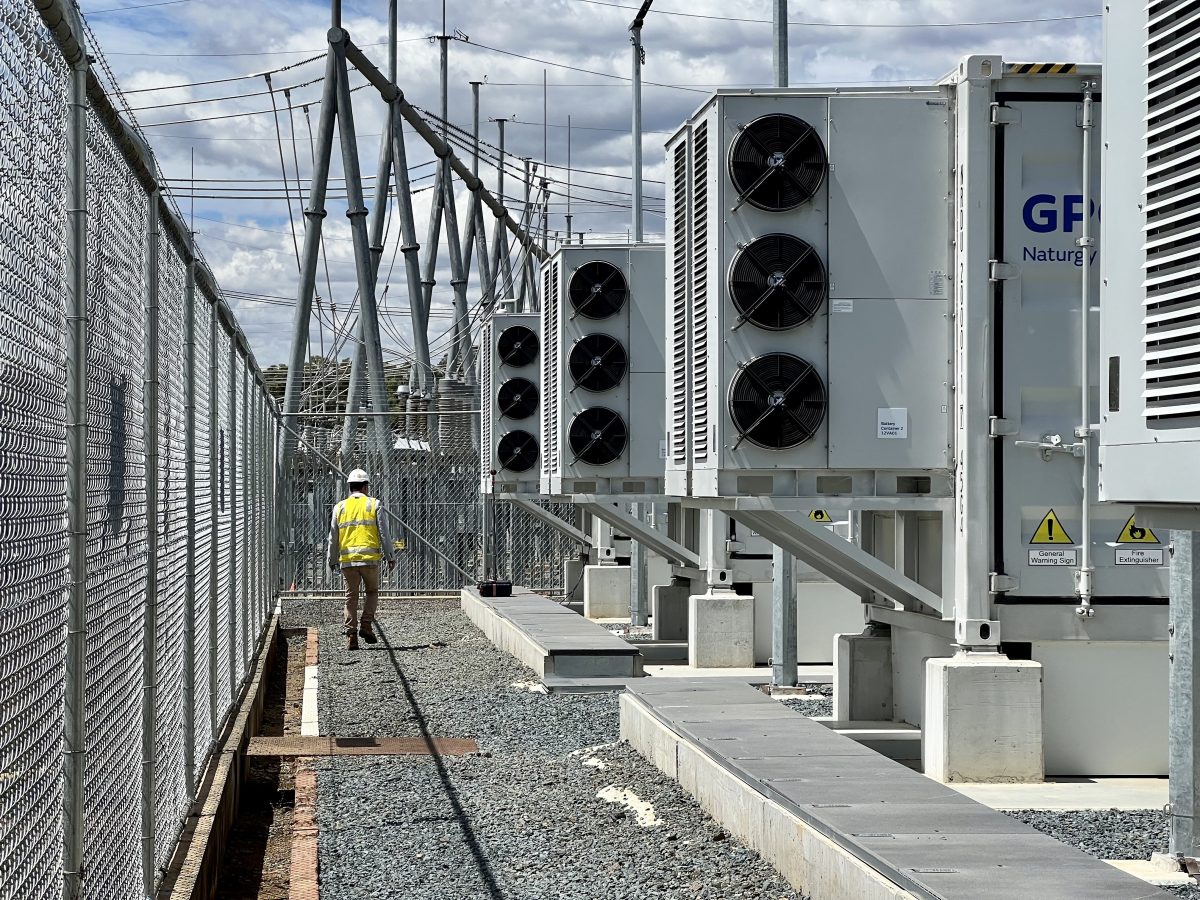
Canberra’s first grid-scale battery facility in Beard. Photo: James Coleman.
“Don’t push the red button.”
After the obligatory warning from staff, Chief Minister Andrew Barr switched on the ACT’s first big – think grid-scale – battery by tapping the virtual ‘Connect’ button on Thursday 2 February.
Located in Beard adjacent to the Queanbeyan substation, the Capital Battery is now fully operational as part of the National Electricity Market, with enough storage to power about 3000 homes for two hours.
“This battery is a significant first for the city, given energy storage and battery technology are a critical component of our zero-emissions future,” Mr Barr said.
“We have even more battery storage on the horizon for the ACT, with a further 250 megawatt of grid-scale and neighbourhood batteries to be installed in the coming years as part of our Big Canberra Battery Project.”
This particular battery, comprising four large metal containers and 100 megawatts of power, has been nearly three years coming. Global Power Generation (GPG), a subsidiary of Spanish energy giant Naturgy, were awarded the development contract in 2019 during the fifth round of the ACT Government’s reverse auctions for renewable energy.
GPG Chief Business Development Officer Pedro Serrano said the company was thrilled.
“Today is a significant milestone, and we would like to thank the ACT Government for trusting us and for supporting the development of this project,” he said.
“Looking forward, we are excited about the future of renewable energy in Australia. By 2025, we are planning 2.2 GW of installed power from renewable technologies – wind, solar photovoltaic and energy storage – and an investment of approximately 2000 million euros.”
It’s hoped a mix of smaller batteries at schools and hospitals, neighbourhood-scale batteries (like the one headed for the new Gungahlin suburb of Jacka) and large grid-scale batteries will eventually power more than one-third of the ACT, at a budgeted cost of $100 million.
Minister for Energy and Emissions Reduction Shane Rattenbury said they’ll become more important as gas and fossil fuels wane and Canberrans demand more electricity for everything from cooking to transport.
“As we transition away from fossil fuels, demand for electricity is going to increase,” he said.
“Energy storage will play an important role in the reliability of the Territory’s electricity supply by providing power to help avoid blackouts during periods of high demand and help to mitigate situations when large, interstate fossil-fuel generators fail in heatwave conditions.”
In all this, Mr Rattenbury said the Government would continue to “deliver some of the lowest electricity prices in the country”.
From July 2022, the ACT became the only jurisdiction in the country where electricity prices fell, by 1.25 per cent for the average Canberra household (or $23 per year). This was driven by a decline in the costs of the ACT Government’s feed-in tariff scheme.
“Ultimately, some of the technologies will become cheaper,” Mr Rattenbury said.
“But if we don’t build them today, they’ll never become cheaper.”
The Capital Battery is expected to last 20 years of charging and discharging cycles, after which hopes are pinned on the technology being available to cleanly recycle the lithium-ion batteries.


